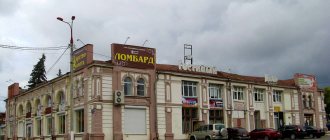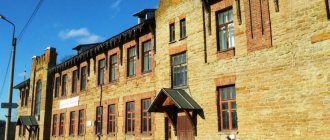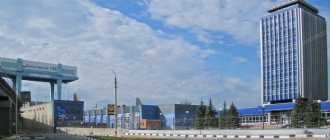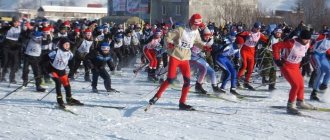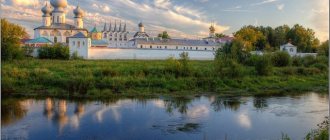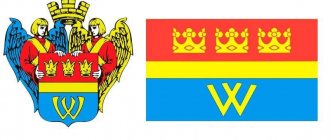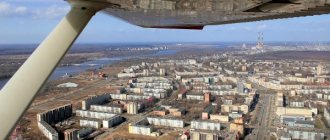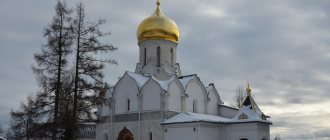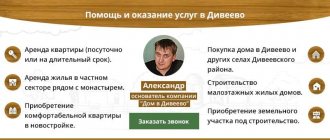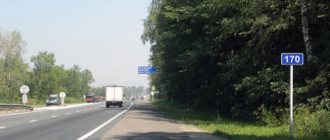Pavlovsk is a museum reserve of national importance. In the 18th century, Catherine loved to walk in this village, and later donated these lands to her son Pavel and his wife. After which, the first palaces of Paullust and Marienthal were erected here, but they were made of wood, so the buildings did not stand here for long. At the beginning of the 19th century, large-scale construction of stone palaces, parks, monuments and other architectural structures began in this territory.
It was not easy for the palace complex in the post-revolutionary and war years. Many trees were cut down, and one of the palaces was burned, the rest of the buildings were also destroyed.
Overnight
Since the city is close to St. Petersburg, the choice of hotels is not wide. There are only two of them in the city, but the location and view are original and memorable:
- Hotel "Pavlovsk". Located close to Palace Park. The building itself was previously the summer residence of the royal family. Cost: from 2,100 rubles per day.
- Hotel "Castle BIP". Loyal to its guests, you can stay here with pets. There is free wi fi. Terrace, bar, and barbecue equipment available. Cost: from 12,000 rubles per day.
Why it's worth a visit
The park is definitely worth a visit for those interested in history, and in particular, the period of the Romanov dynasty. Here, a huge number of monuments reminiscent of the times of the Russian Empire have remained virtually untouched. Also, while walking through the park, you can learn many interesting historical facts. In addition, Pavlovsky Park is perfect for photo shoots or family outings.
© Daria Gross
Opening hours and ticket prices to the Pavlovsk Museum-Reserve
When planning a visit to the palace and park complex, please note that opening hours for facilities and exhibitions may vary.
Opening hours of the Pavlovsk Palace in 2022
The palace is open to the public every day from 10:00 to 18:00. Last entry at 17:15.
The ticket office on the Parade Square is open from 10:00 to 17:00; at the entrance to the park - from 10:00 to 16:30. The halls of the Central Building, where the main exhibitions are located, are open according to the palace schedule, but weekends may vary.
Pavlovsk Palace, © Anna Kudryavtseva
Opening hours of Pavlovsk Park in 2022
The park is available to visitors in the summer - from May 1 to August 31, daily from 07:00 to 23:00.
The operating hours of pavilions and other objects of Pavlovsk Park may differ from the general schedule:
- Own kindergarten - daily from 10:00 to 19:00 (from May 8 to August 31);
- Bode Gardening - daily from 10:00 to 19:00 (from July 1 to September 30);
- Pavilion Temple of Friendship - daily from 11:00 to 17:00, Monday - closed (from May 1 to October 31);
- Pink Pavilion - daily from 11:00 to 17:00, Monday - closed (from May 1 to October 31);
- Pavilions Cold Bath and Peel Tower - daily from 11:00 to 17:00, Monday - closed (from May 1 to October 31).
Pink pavilion, © Nina Nina
Ticket prices in 2022
Tickets are sold at the museum box office; their cost depends on the object and category of visitors. The Pavlovsk Museum-Reserve provides days of free admission for privileged persons. The terms and conditions can be found here.
Tickets to Pavlovsk Palace:
- State halls of the palace (2nd floor) and Living rooms (1st floor): adults, students - 600 rubles, students (7-18 years old), pensioners, labor veterans - 300 rubles, families - from 1000 rubles;
- Excursions: group from 10 to 25 people. - for free; individually (up to 4 people) - 1000 rub./person.
Tickets to Pavlovsky Park:
- Free admission from 07:00 to 09:00 and from 21:00 to 23:00, paid - from 09:00 to 21:00 (adults, students - 100 rubles, students (7-16 years old), pensioners, veterans labor - 50 rub.).
- Excursion for groups from 2 to 19 people. is held from May 12 to October 1 on Saturdays and Sundays at 13:00. Ticket - 300 rubles. for all categories.
- Special passes . See their prices and terms of use here.
Tickets for expositions and exhibitions also depend on the object, on average 150–200 rubles. Inspection of some buildings and exhibitions is possible without additional payment, with a general admission ticket.
Prices for visiting exhibitions at the Pavlovsk Museum-Reserve
Round hall, © Nina Nina
How to get there from St. Petersburg
From St. Petersburg you can get there in several ways:
- by electric train from Vitebsky station (departures approximately every half hour), travel time 35 minutes;
- minibus from the station. metro station Moskovskaya - 286, 299, 545, 545a (travel time 40 minutes);
- from metro station Zvezdnaya – 363, 479;
- from metro station Kupchino – 521.
Things to do
- Tripster - craft beer tours from locals.
- Sputnik and Wheatlas - excursions from professional guides.
Church of Mary Magdalene
Address: st. Sadovaya, 17 Telephone: Opening hours: 9.00-19.00
This Orthodox church was erected in 1784 with donations from Empress Maria Feodorovna as a court church by the architect Kvarneghi. For a long time, there was an almshouse, an orphanage, a hospital and a free pharmacy.
Military relics were kept in the church: captured banners and standards captured by the Russian army in its campaigns.
There are monuments here - cenotaphs (false tombstones) to Count Panin, Prince A. Burakin, tutor to Emperor Alexander Zagryazhsky. The last tombstone, in the form of a white marble mausoleum with a mourning woman, was built by the architect Marcos.
Currently it is a functioning temple.
Pavlovsk is open to visitors
Reconstruction of the palace and park complex began immediately after the war and lasted almost 30 years. Now Pavlovsk is one of the largest historical monuments in the Leningrad region, covering 600 hectares. Pavlovsk is open to visitors, you can walk around the park areas on your own, or as part of excursion groups, to get to know the history of the construction of such a significant complex.
The park complex consists of seven zones that deserve special attention:
- Palace
- Parade Field
- White birch
- Big Star and Valley of Ponds
- Valley of the Slavyanka River
- Old Seville
- New Seville
The palace and park complex is included in the official UNESCO World Heritage List. What you can see in Pavlovsk is presented below in the description of attractions.
Architectural and Historical Monuments
- The Pavlovsk Palace is the greatest building of this complex; it was built over 50 years by different architects. Building plans changed, additional buildings were added. In 1803, significant damage to the palace was caused by a fire, after which it was reconstructed. Having survived all the reconstruction, today the palace has 300 halls for receiving guests.
Now on the territory of the palace there is a museum with various exhibitions. All rooms that are included in the exhibition “Residential Interior Decoration of the 19th Century” are open to visitors; you can also see the exhibition “Costume Museum” and the portrait gallery of the Romanovs.
Music festivals and folk festivals are regularly held on the territory of the palace and park complex.
Museum workers try to keep up with the times, constantly adding to the exhibitions, developing and inventing new themes for them. It hosts exhibitions of contemporary art, educational programs on history, the times of the creation of the palace for children and adults. Initially, the Pavlovsk Palace was built as a summer residence, but it rightfully occupied one of the main places for the royal family.
- The mausoleum to the husband of the Benefactor was erected by order of Maria Feodorovna, after the death of Paul 1. The mausoleum is the only architectural creation located in the area of New Seville and is framed by a dense forest, which gives it even greater sorrow. The mausoleum itself is made in the form of a small temple; inside it there is a false tombstone, and next to it there is a sculpture of a woman with a crown on her head, sobbing over an urn with ashes. In this way, Maria Fedorovna wanted to perpetuate the memory of her husband. During wartime, the monument was severely destroyed and received a new life after restoration.
- The Temple of Friendship is located in the Slavyanka River Valley area and is made in the form of a round gazebo, where the royal family loved to celebrate. The temple has one blank wall, doors and no windows; next to it there was a small kitchen, from which the servants served meals. Various trees have been planted around the Temple of Friendship: maples, willows, and spruces have placed their greenery here. In the Temple of Friendship itself there are many sculptures and monuments on the theme of friendship. According to legend, the Temple of Friendship is dedicated to Catherine 2, in honor of gratitude for the donated lands.
- The Pink Pavilion is located in an area of the park called White Birch, it is built entirely of wood, but so skillfully that many visitors think it is built of stone. The pavilion owes its name to the rose bushes planted around it. Inside, on the wall, in stucco moldings, furniture and services, one could also see an image of roses - Maria Feodorovna’s favorite flowers.
A distinctive feature of this architectural work was that harps were built into the windows, which made sounds, filling the pavilion with music with every breeze. People loved to host poets, artists, writers here for relaxation and small talk.
- The House of the Pavlovsk Palace Administration is one of the architectural structures of Pavlovsk by the Russian architect I. Potolov.
- The Apollo Column was originally a colonnade of thirteen columns, inside which was a statue of Apollo. After this architectural monument was moved across the park, the foundation of the column began to be washed away by a cascade of water and over time the sculpture could not stand it. On a stormy night, some of the columns collapsed, thus ending the work of the famous sculptor. In this form, the colonnades look in antique style, so they decided not to restore it. Now, due to the surrounding greenery and the location of the columns, the figure of Apollo is difficult to view for tourists.
- The Pavilion of the Three Graces is a temple built in the Greek style. After the installation of statues of three goddesses in it, the pavilion received its name. The pavilion is located in Maria Feodorovna’s own garden.
During the war years, in order to save the amazing sculptures of three goddesses, carved from solid stone, the statue was buried in the ground. After restoration, now everyone can admire the sculptures in the pavilion of the same name.
- Fortress BIP, stands for Pavel's Big Toy, it was he who wanted to build himself a pleasure castle on another part of the city. It was built in just 3 years and looked like a medieval military fortress with moats and other military attributes. The castle was registered with the military department and was not part of the protected area of Pavlovsk.
After the revolution, the castle served as a school for deaf and mute children, then as a headquarters, but during the Great Patriotic War it was completely destroyed.
The castle was subject to restoration in 2011, and now there is an elite hotel and restaurant here, which you can visit if you wish.
- The Vallières Pavilion or Poultry House, as it is also called, was built in 1782. Initially, it was decorated with a huge amount of color, Maria Feodorovna literally turned it into a greenhouse. And she loved to spend lunch and evening feasts here.
After her death, a pond was dug in front of the pavilion, now near which there is a marble statue of the Venus of Italy, a copy of the original statue.
In this pavilion, in honor of the memory of the first mistress, the “Imperial Bouquet” flower festival is regularly held, which again turns the Vallières pavilion into a greenhouse.
- The dairy courtyard was built by the same famous architect Cameron, in the style and spirit of Switzerland, at the request of Maria Feodorovna.
The courtyard contained the following rooms:
- Dining room
- Reception room
- Kitchen
- Room for milkmen
- Cellar
- Stable
After the revolution and during the Great Patriotic War, the premises of the dairy yard were used as stables and were subject to destruction and fire. In modern Pavlovsk, the building for milkmen was restored, which now serves as a pavilion.
- The humpbacked bridge in the park also makes an indelible impression on park visitors. It is made in the shape of an arch and runs through the mouth of the Slavyanka River. The willows going down to the water give the bridge a special romantic atmosphere.
Natural attractions of Pavlovsk Park
- The young groom's alley is where the entrance to the park from the railway station begins. It is located in the forest area of the Bolshaya Zvezda Park, and the Alley owes its name to Maria Feodorovna. She loved to play with the courtiers, so in the park you can also see the Alley of the Green Woman and the Alley of the Red Young Man. Arriving in Pavlovsk by rail, you immediately find yourself in a picturesque park, on the Alley of the Young Groom.
- The triple linden alley was created according to the design of the famous architect, for a wide entrance to the central part of the park with a carriage, framed on both sides by narrow pedestrian paths. The linden trees are still preserved, forming an incredible green corridor.
- The Marienthal Pond is of modest size and serves as a decoration for Petrovsky Park and belongs to the historical Marienthal Park. The pond was artificially created on the Slavyanka River to preserve water during the dry summer period.
The pond is decorated with a stone staircase with statues of lions, which adds charm to the area, and on the shore there is an ancient fortress.
- The family grove is located in Pavlovsky Park and is the personification of the wonderful family tradition of the royal family. Here, the parents of the entire royal family planted a tree in honor of the newborn child. This tradition lasted until 1917, and the grove has significant plantings, due to the large number of children in the royal family.
- The Valley of Ponds is an area of unique artificially created ponds that were combined with natural ponds. A walk through the valley of ponds will not leave any tourist indifferent. This exhibition was created at the end of the 18th century and is still relevant.
Natural attractions
The list of natural attractions of Pavlovsk can be continued endlessly:
- Pavilion Old Chalet with a small grove.
- Wall of the Grand Cascade.
- Gate with fruit vases.
- Own kindergarten
- Parade field
- The most beautiful place
- Circle of white birches
Ancient restored buildings
In addition to this, you can see in the city ancient restored buildings that date back to the 18th-19th centuries:
- Invalid home
- Stein's dacha
- Cast iron gates
- Palace stables
- Train Station
City architectural landmarks
Past the Pavlovsk palace and park complex, you can walk around the city and admire its historical architectural buildings, which will also take you back to the era of Tsarist Russia.
- The House with an Angel is an architectural monument of the city of Pavlovsk; along the main wall there is stucco molding in the form of a bas-relief of an angel the size of the entire house. Over the course of a long history, the court lady of Empress Maria Fedorova, the merchants Baryshnikov, and Mandel lived here.
When the house was owned by merchants, there was an amazing collection of dishes and porcelain items, as well as other paintings.
The house was abandoned for a long time, but restoration work is now underway, and we will soon be able to see the house revived in new colors.
Shrines and Churches of Pavlovsk
- The Cathedral of St. Nicholas the Wonderworker was originally built in 1841 from wooden materials, but by order of the tsar, a decision was made to build a stone church, which was consecrated in Pavlovsk in 1902, in the presence of the royal family.
During the revolution, the temple was temporarily closed, but again opened its doors to parishioners during the Great Patriotic War. After the war, the temple was closed again.
In 1991, the church was restored and re-consecrated. To this day, the Cathedral of St. Nicholas the Wonderworker is open to Orthodox believers and has unique wooden frescoes that have survived to this day.
- The Church of Catherine and the Nativity of the Blessed Virgin Mary was built in 1743 and has a Louis XIV style unique to the Russian area. The church was erected on a hill above the Slavyanka River, at the expense of the local Count Skavronsky, which gives it a majestic appearance.
The building itself is two-story, on the first floor is the Church of the Great Martyr Catherine, and on the second is the Church of the Nativity of the Blessed Virgin Mary. Like many shrines, in the post-revolutionary period the church was used for other purposes, and during wartime it suffered significant destruction. Since 2007, reconstruction work has been carried out and the church is still open to parishioners.
- The Church of Mary Magdalene was erected at the end of the 18th century, with the help of Maria Feodorovna, its main purpose was court service, there was an almshouse, a pharmacy, an orphanage and a hospital at the church. The main attractions here were artifacts and military relics brought by the Russian army from victorious battles.
Since 1995, the church received recognition as an architectural monument, and only 5 years later, after restoration work, it opened its doors to parishioners.
Cathedral of St. Nicholas the Wonderworker
Address: st. Artilleriyskaya, 2 Telephone: Opening hours: 9.00-19.00
The temple was built in 1841, was a camp church of the Exemplary Cavalry Regiment and was originally made of wood. There was no heating and no permanent servants. The service was conducted by various local priests.
Then, by decree of Grand Duke Constantine, in place of the wooden temple, the architect Carboniere erected a stone one in the Russian style traditional for that time. It was illuminated in 1902 in the presence of the sovereign's family.
The church was closed in 1930, but in 1941 services in the temple resumed. After the end of the war, the temple was closed again, and only in 1991 it was transferred to the diocese.
The main artistic attraction of the church is the wooden iconostasis, it was made according to the sketches of the artist Subbotin.
Pavlovsky Park
This is one of the largest landscape parks in our country, occupying 600 hectares of land. It is divided into seven landscape areas:
- Palace area - this includes the Own Garden, designed in the style of French and Dutch gardens; the center is a linden alley along which carriages drove up to the front porch. Large circles are carpet flower beds and tuff terraces; in the same area there is the famous Labyrinth, built from topiary bushes.
- The valley of the Slavyanka River is an area planted with silver willows and oaks, and there are also numerous plantings of dwarf bushy trees. There are cascades, spills and dams on the river; There are numerous bridges across the river: Gorbaty, Chugunny, Viskontiev and others.
- White Birch is an area designed by Pietro Gonzago in the style of a flat Russian park.
- Old Sylvia - this area is distinguished by a regular layout: here the paths, like rays, run in different directions from the central square.
- New Sylvia is an area of dense deciduous forest, in the thicket of which the Mausoleum of the benefactor spouse is hidden.
- Red Valley - among the ancient oaks and silver willows there are Ruins, artificial ancient ruins.
- Valley of Ponds - deep dark ponds surrounded by a wall of ancient trees.
The park has a large number of pavilions that harmoniously fit into the landscape. All pavilions are divided into two groups: memorial and classical.
The marble and bronze sculptures placed along the alleys of the park are of great artistic value. Bridges were built across the Slavyanka River, which flows here.
Mausoleum to the benefactor spouse
Address: Pavlovsky Park, New Sylvia district
A mausoleum was built in the depths of Pavlovsky Park. There is a dense and gloomy forest around it, the mausoleum was specially built here, in a place of loneliness and sadness, to emphasize its purpose.
Inside it there is a false tombstone (cenotaph), built by the architect I. Martos. Above the tombstone is a stone figure of a young woman, hugging in inescapable grief an urn containing the ashes of her beloved husband. This figure is a symbol of grief for all the dead.
Temple of Friendship
Address: Pavlovsky Park, Slavyanka River Valley area
The rotunda was designed and built by the architect Cameron. Concerts and intimate parties were held in this round building; next to the pavilion there was a small kitchen in the form of a hut, where food was prepared.
The pavilion is decorated only with modest bas-reliefs on the theme of love and friendship. The center of the rotunda is a statue of Catherine in the image of Caeceser. In the summer, the pavilion hosts exhibitions of sculpture from the museum's collections.
Pink Pavilion
Address: Pavlovsky Park, Belaya Bereza district
The romantic building of the architect Voronikhin is built of wood, but one gets the absolute impression that its walls are made of stone. It is surrounded by a magnificent rose garden, which gives the pavilion its name. But even inside it, everything was decorated with images of roses: lamps, vases, furniture, stucco on the ceiling and a huge service.
The harps built into the windows sound from the slightest breeze.
Poets, writers, and artists were received here. These walls remember Batyushkov, Zhukovsky, Karamzin.
Here Empress Maria Feodorovna met Alexander, her son, who had returned from Paris with victory over Napoleon. To make it possible to organize a reception in honor of this event, a special hall was added to the pavilion. This holiday went down in history.

